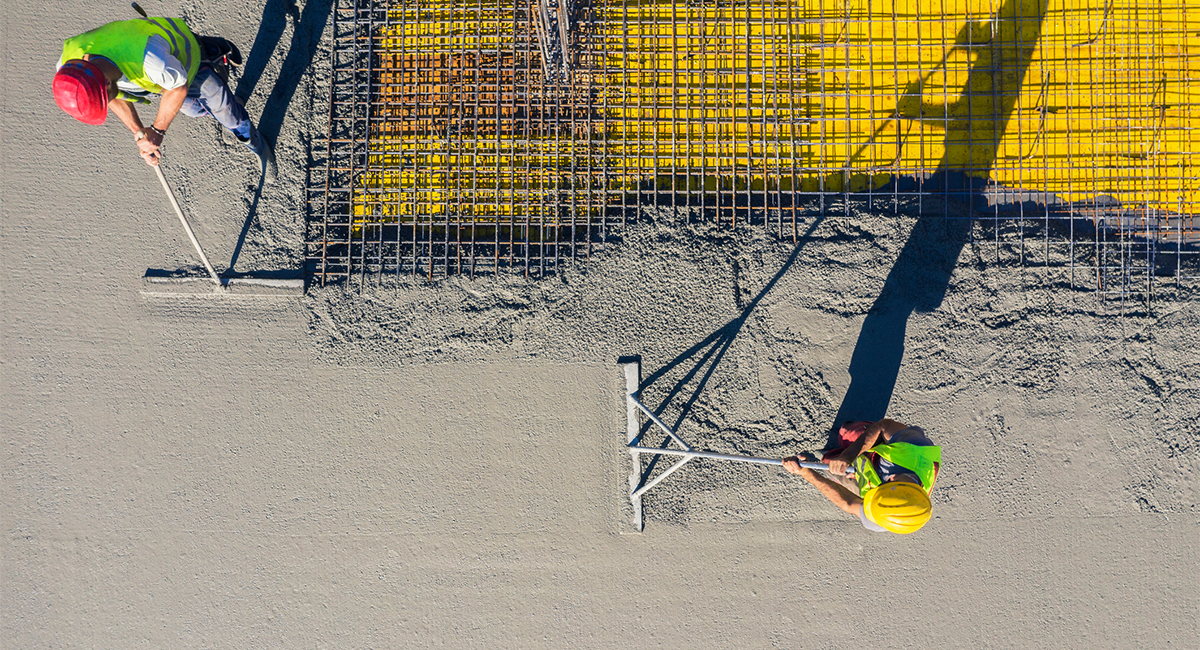In September of this year Asite will be holding its annual Build Earth Live event in Dubai.I was...

The way we use buildings and the materials we use to make them are responsible for nearly 50% of greenhouse gas emissions. Advanced Building Materials present an opportunity to, as commonly quoted, “meet the needs of the present without compromising the ability of future generations to meet their own needs.”
In our previous blog, we discussed the pervasiveness of concrete and cement as construction materials, and highlighted their limitations when it comes to resilience and sustainability.
While there are many ABMs designed to improve the integrity of the built environment and the delivery of assets, it is worth focusing on cement, concrete, and the strides being taken to augment these already familiar building materials.
Here are three of the most exciting advancements in this space:
Self-Healing Concrete
Self-healing concrete could solve the problem of concrete structures deteriorating well before the end of their service life.
Concrete can withstand compression but is prone to cracking where there is tension, so it is often reinforced with steel. However, where these cracks appear, water can seep through, making the whole structure vulnerable. The water degrades the concrete and corrodes the steel reinforcements, greatly reducing the lifespan of the structure. Repairing cracks in concrete structures is time-consuming and costly, but incredibly necessary.
Self-healing concrete is produced using calcite-precipitating bacteria. Essentially, when water seeps through a crack, the bacteria spores germinate and biologically produce limestone to heal the cracks. These self-healing agents can lie dormant within the concrete for up to 200 years.
Alongside saving money, this could have a huge impact on the environment as longer-lasting concrete means less cement.

Solar Energy-Generating Concrete
A team of researchers from ETH Zurich, co-led by Professors Philippe Block and Arno Schlüter, successfully designed and erected a prototype for a concrete roof structure that generates solar energy.
The layers of the structure work together to generate energy. The first inner concrete layer is covered by insulation as well as temperature-regulating coils. The thin, second concrete layer houses the thin-film layer of photovoltaic cells. The tapering concrete layers range in thicknesses between only 3cm and 12cm, from the roof edge to the supporting structure.1
The thinking behind the project was twofold: to prove that materials not commonly associated with “green” building could be used to create sustainable energy and to create a structure that could produce energy at a faster rate than it was being expended.
The structure will form part of HiLo – a research and innovation building at the NEST (Next Evolution in Sustainable Building Technologies) platform in Switzerland.

Illuminating Cement
Cement that can absorb sunlight and emit light from its stored energy has the potential to reduce electrical consumption in outdoor spaces.
By modifying the optical properties of Portland cement, Dr. José Carlos Rubio Ávalos and his team at UMSNH of Morelia in Mexico were able to increase the capacity of the material to absorb and radiate light. This was achieved by adding special additives to the cement through a process of condensation of raw materials.
This illuminating cement can absorb solar energy during the day and emit light for up to 12 hours each night after absorbing sunlight and has a potential lifespan of over 100 years.2

Revolutionizing The Way We Work
On a larger scale, these materials have the potential to completely revolutionize the way we design, build, and interact with built assets. Concerted efforts in research and development as well as investment in this area could see these materials, along with other exciting ABMs, become ubiquitous.
Ready to discover more about how ConTech can improve your projects? Learn more here.
Asite Insights in your inbox.
Sign up for product news and our latest insights published monthly. It's a newsletter so hot, even global warming can't keep up.


